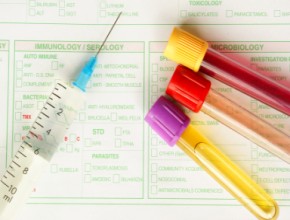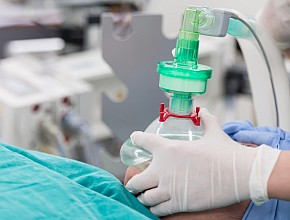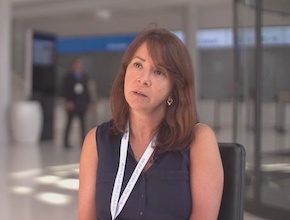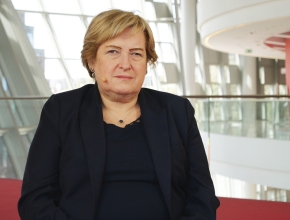LABA+LAMA more beneficial than LABA+ICS in COPD
In patients with chronic obstructive pulmonary disease (COPD), the combination of an inhaled long-acting beta-agonist (LABA) plus a long-acting muscarinic antagonist (LAMA) has some advantages over the combination of an inhaled LABA plus an inhaled corticosteroid (ICS).
Three classes of long-acting inhaled medications are used as part of the management of COPD. LABAs, LAMAs, and ICSs are used alone (LAMA or LABA) or in different combinations in such patients. This meta-analysis included patients with stable COPD without recent exacerbations.
The LABA+LAMA combination in comparison to LABA+ICS resulted in fewer exacerbations (odds ratio [OR], 0.82; in an absolute estimate, about 45 fewer exacerbations per 1000 patients followed up for up to a year), larger FEV1 (by 80 cm3), and beneficial changes in the quality of life questionnaire (OR of 1.25 for an improvement likely representing the minimal clinically important difference; approximately 50 more patients achieving this level of improvement per 1000 treated). The risk of pneumonia was lower (OR, 0.57; in absolute numbers, about 10 fewer per 1000 patients).
The authors have concluded there is likely a benefit of using the LABA+LAMA combination over the LABA+ICS combination in patients with COPD.
Hypertension: benefits of beta-blockers vs other classes of drugs
The benefits of beta-blockers (BBs) are likely lower than those of other classes of drugs used for the treatment of hypertension.
This meta-analysis examined the effects of BBs in comparison to placebo (over 23 000 participants in 4 randomized controlled trials [RCTs]) or in comparison to other drugs: diuretics (>18 000 patients; 5 RCTs), calcium channel blockers (CCBs) (>44 000 patients, 4 RCTs), and renin-angiotensin system (RAS) inhibitors (>10 000 patients, 3 RCTs). Atenolol was used in the majority of trials. Newer vasodilating BBs were not used.
In comparison to placebo, the estimates of BB effects per 1000 patients treated for at least a year (from 1 year to over 8 years, mostly 3 to 5 years) were as follows: no difference in mortality (relative risk [RR], 0.99); 7 fewer total cardiovascular events (RR, 0.88), including 5 fewer strokes (RR, 0.80); no statistically significant difference in coronary artery disease (3 fewer cases); and a much higher chance of withdrawal due to adverse events (over 170 withdrawing patients more; RR, 3.38).
For mortality, the effects of BBs were not statistically different from diuretics (RR, 1.04) and from RAS inhibitors (RR, 1.10). BB-using patients had a higher risk of death than patients on CCBs (RR of 1.07 with the absolute survival difference of about 1 in 200 treated patients). The rate of stroke was also higher in the group receiving BBs in comparison to CCBs (RR, 1.24; estimated 1 extra stroke per 180 treated patients) and RAS inhibitors (RR, 1.30; 1 extra stroke per 65 treated patients).
BBs were not superior in comparison to other drugs in terms of coronary artery disease or total cardiovascular events. The effect of BBs used as a primary medication on blood-pressure lowering was estimated at 11 mm Hg for systolic blood pressure and 6 mm Hg for diastolic blood pressure; however, BBs did not exceeded the effects of other drugs in any comparisons.
Diabetes mellitus: bariatric surgery vs intensive medical therapy
Bariatric surgery improves glycemic control and may lead to resolution of type 2 diabetes mellitus.
About 150 obese patients with type 2 diabetes (mean characteristics: body mass index, 37; age, 49 years; glycated hemoglobin, 9.2%; duration of diabetes, 8.4 years) were randomized to intensive medical therapy versus medical treatment plus Roux-en-Y gastric bypass versus medical treatment plus sleeve gastrectomy.
After 5 years, diabetes was effectively cured (glycated hemoglobin ≤6.0% without the use of medication) in 5% of patients on medical treatment alone versus 29% in the gastric bypass and 23% in the sleeve gastrectomy groups. Body weight loss was 5% versus 23% versus 19%, respectively. Changes on a 100-point quality of life questionnaire were 0.3 point versus 35 and 34 points. Reoperations were required in 5 surgical patients (about 5%), including 4 during the first year.
 English
English
 Español
Español
 українська
українська








